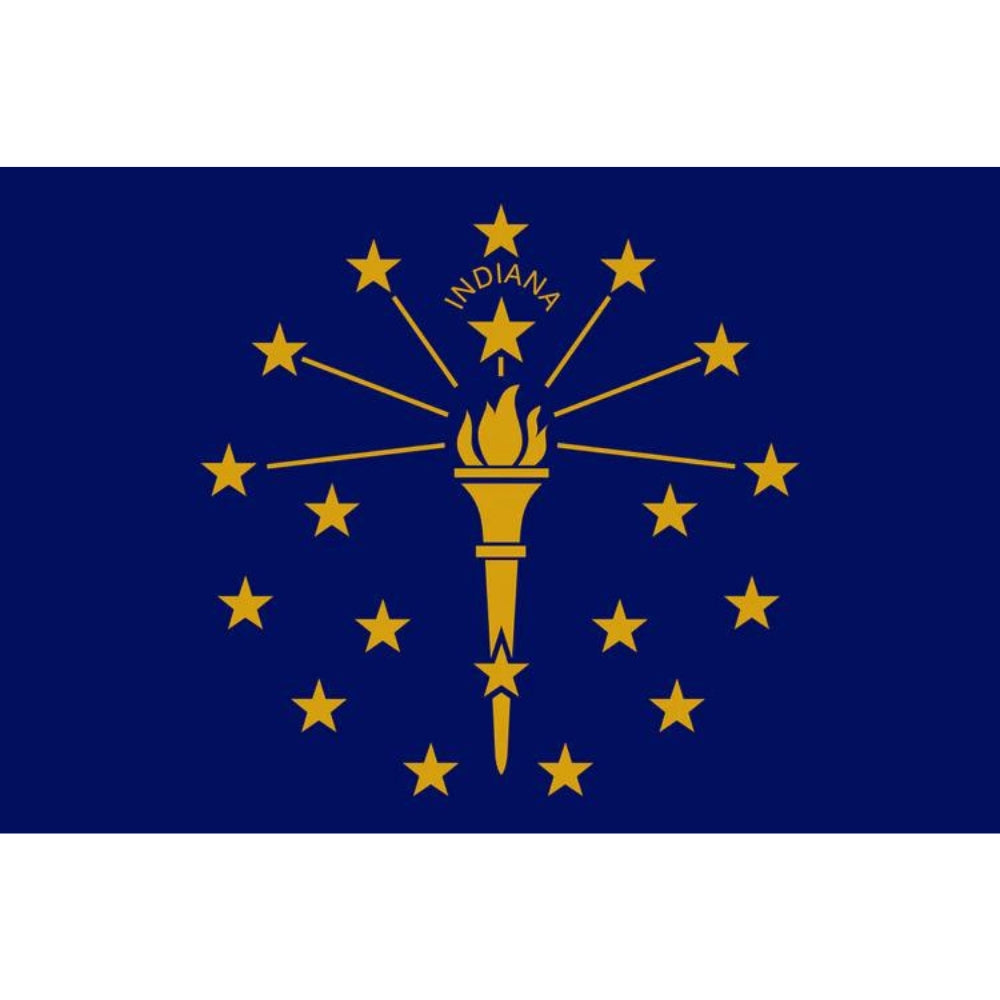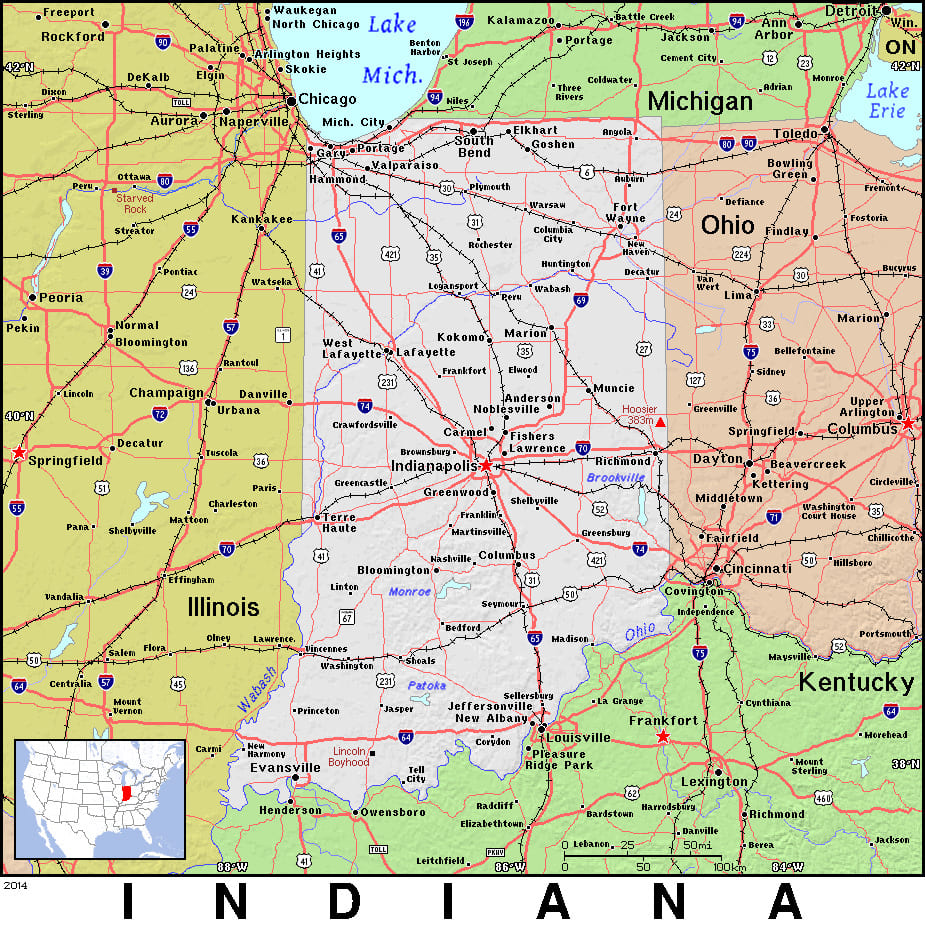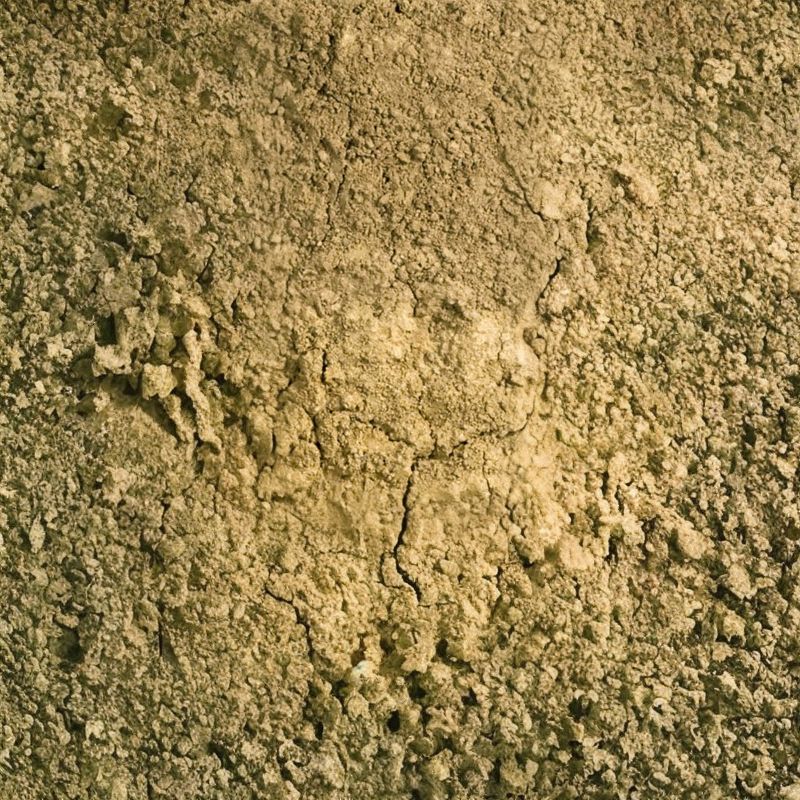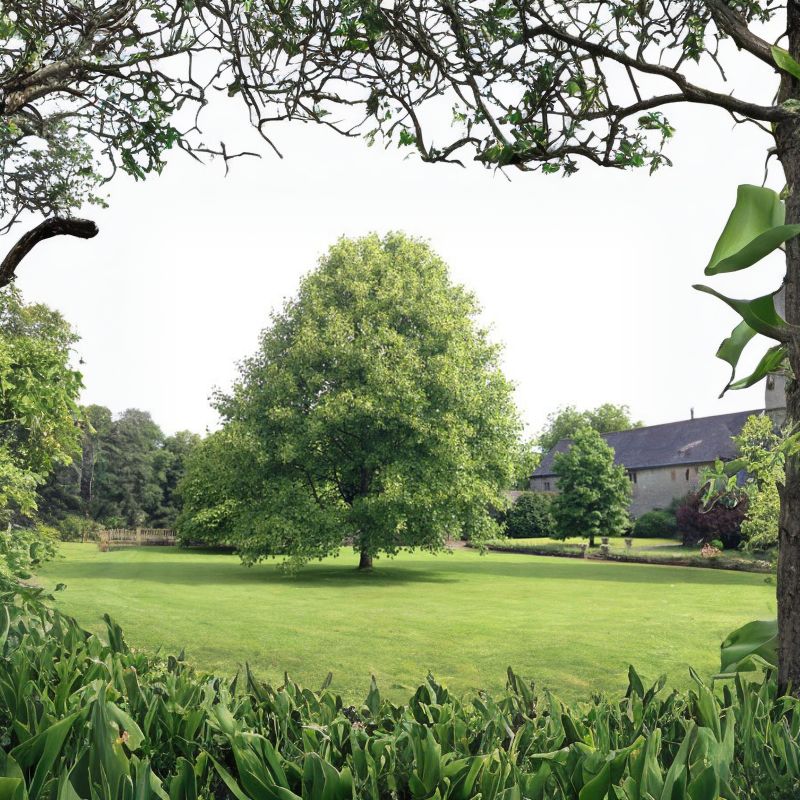Explore the Fascinating History of Indiana
Take our IndianaTrivia Quizzes for a Chance to Win a 6-Month Subscription to History By Mail!

The History of Indiana
Journey Through Indiana Trivia
Welcome to our Indiana History and Trivia Page, proudly presented by History By Mail. Join us as we embark on a journey through the captivating past and cultural tapestry of the Hoosier State. From ancient Native American civilizations to European exploration and the modern era, we'll explore Indiana's hidden gems and challenge your knowledge with entertaining quizzes, including Indiana trivia questions.
Indiana, famously known as the Hoosier State, is a land of extraordinary history and diverse heritage. From the indigenous tribes who first inhabited the region, such as the Miami and Potawatomi, to the impact of French and British exploration and the establishment of settlements, Indiana holds a captivating legacy. From the bustling city of Indianapolis to the scenic landscapes of the Indiana Dunes, the state showcases a blend of cultures, vibrant cities, and a deep connection to its Native American and European roots.
Join us as we unravel the intriguing history and trivia of Indiana, delving into its role in shaping American history, its contributions to manufacturing and agriculture, and the fascinating stories that make it a unique and cherished part of our nation's heritage. Test your knowledge with engaging Indiana trivia, and discover the Hoosier State's captivating past.
Facts about Indiana
State Abbreviation: IN
Capital: Indianapolis
Name Origin: Indiana was named after the American Indian tribes who lived there when Europeans arrived.
Nickname: The Hoosier State
Statehood: December 11, 1816 (19th State)
State Motto: "The Crossroads of America"

Indiana's Flag
The State Flag of Indiana is a distinctive and meaningful symbol that represents the history and values of the state. The flag features a blue field with a gold torch in the center, surrounded by 19 stars on a circular blue background. The torch is a powerful representation of liberty and enlightenment, symbolizing progress and the pursuit of knowledge.
The 19 stars encircling the torch represent Indiana's admission as the 19th state in the United States. The stars are divided into five groups, each consisting of four stars, and are positioned above the torch in a semicircular shape. This arrangement is intended to symbolize Indiana's unique status as a state that is part of the Northwest Territory.
The vibrant blue color of the flag's background signifies loyalty and vigilance, while the gold color of the torch and stars represents the state's rich heritage and prosperity. The flag's design is simple yet impactful, conveying a sense of unity, pride, and optimism for the future.
Indiana's Great Seal
The Indiana state seal portrays a woodsman felling trees as a bison retreats in the foreground, representing westward settlement. The sun sets behind distant hills. The year of statehood, 1816, is at the seal's bottom edge, framed by diamonds and tulip leaves on each side.

--- State Trivia #1 ---
History of Indiana
Indiana, situated in the Midwest, boasts a rich archaeological history that spans thousands of years. Native peoples inhabited the region for over 15,000 years, witnessing various cultural transformations. During the 1000s, Indiana was home to prominent societies like the Mississippian and Fort Ancient cultures, alongside renowned nations such as the Chickasaw, Lenape, Wyandot, Cherokee, and Shawnee.
French explorers, including Robert Cavelier, Sieur de la Salle, ventured into Indiana during the 17th and 18th centuries, establishing a strong French presence through military and economic endeavors. The region played a pivotal role in the Franco-British struggle for North America, culminating in British triumph in 1763. In the Revolutionary War, George Rogers Clark led American forces against the British, and Indiana witnessed frequent Native American uprisings until significant victories by Gen. Anthony Wayne at Fallen Timbers in 1794 and Gen. William Henry Harrison at Tippecanoe in 1811.
Throughout the 19th century, Indiana became a hub for experimental communities, including those led by George Rapp and Robert Owen at New Harmony.
During the Gilded Age, Indiana transformed into an industrial powerhouse. Its 41-mile Lake Michigan waterfront, known as "one of the world's great industrial centers," played a pivotal role in iron, steel, and oil production, making significant contributions to the growth of the American automotive industry. Although the Great Depression affected Indiana, the state's well-established industries propelled it to substantial growth following World War II.
Notably, Vice President Mike Pence, who hails from Indiana, served as the state's Governor for four years.
Indiana offers a range of captivating attractions. Crawford County is home to Wyandotte Cave, one of the largest caves in the United States, while West Baden and French Lick are renowned for their mineral springs. Visitors can explore Indiana Dunes National Lakeshore, experience the excitement of the Indianapolis Motor Speedway, delve into history at the Lincoln Boyhood National Memorial, or immerse themselves in the heritage of the George Rogers Clark National Historical Park.
State Symbols
Fun Facts
- Popcorn salesman Orville Redenbacher, actor James Dean, and songwriter Cole Porter were all born in Indiana.
- The Indianapolis 500 car race, often called the Indy 500, has been held at a racetrack in the state capital nearly every year since 1911.
- Angel Mounds is an archaeological site where people lived between the years 1000 and 1450. It’s named for its 11 big earthen mounds, which ancient peoples used for burial and ceremonial purposes. Experts have found artifacts such as pots here.
--- State Trivia #2 ---

Things To Do in Indiana
- Explore Indiana Dunes National Park: Discover the stunning natural beauty of the Indiana Dunes, where you can hike through scenic trails, relax on sandy beaches along Lake Michigan, and observe diverse wildlife. Enjoy activities like birdwatching, swimming, picnicking, and camping in this picturesque national park.
- Visit the Indianapolis Motor Speedway: Experience the thrill of speed and immerse yourself in the world of auto racing at the iconic Indianapolis Motor Speedway. Take a tour of the track, learn about its history at the museum, and if you're lucky, catch a race or witness the famous Indianapolis 500.
- Discover the Children's Museum of Indianapolis: Plan a family-friendly adventure at the Children's Museum of Indianapolis, one of the largest children's museums in the world. Engage in interactive exhibits, explore hands-on science activities, delve into history, and let your kids' imaginations soar in this educational and entertaining museum.
- Immerse in history at Conner Prairie: Step back in time at Conner Prairie, an interactive history park in Fishers. Experience life in the 19th century as you interact with costumed interpreters, explore historic buildings, and participate in hands-on activities. From riding in a hot air balloon to visiting a pioneer settlement, Conner Prairie offers a captivating journey through Indiana's past.
- Enjoy the Indiana State Fair: Embrace the spirit of Indiana at the annual Indiana State Fair held in Indianapolis. Indulge in delicious fair food, ride thrilling amusement park attractions, attend live concerts and performances, and explore agricultural exhibits. The State Fair is a vibrant celebration of Indiana's culture, agriculture, and entertainment that offers fun for all ages.

General Map of Indiana
Indiana, known as the "Hoosier State," is a captivating destination located in the Midwest region of the United States. Renowned for its diverse landscapes, historic sites, and warm hospitality, Indiana offers a wealth of experiences for visitors of all kinds. From exploring vibrant cities to immersing in natural beauty, Indiana invites travelers to embark on a memorable journey filled with fascinating history, outdoor adventures, and cultural discoveries.
Famous People From Indiana
--- State Trivia #3 ---
FREQUENTLY ASKED QUESTIONS (FAQ) ABOUT INDIANA
Indiana is often referred to as the "Hoosier State." The exact origin of the term is debated, but it likely comes from the early settlers. It's said that when someone knocked on a cabin door, the resident would respond with "Who's here?" Eventually, "Who's here?" became "Hoosier," and the name stuck.
Indiana became the 19th state of the United States on December 11, 1816. It was the first state west of the Appalachian Mountains to be admitted to the Union.
The Indianapolis 500 is a famous auto racing event held annually at the Indianapolis Motor Speedway. It's one of the most prestigious and oldest car races in the world, dating back to 1911. The race has become an integral part of Indiana's culture and draws racing enthusiasts from around the globe.
Indiana has been home to many cultural icons. Author Kurt Vonnegut, known for his satirical novels, hailed from Indianapolis. The Jackson 5, including pop superstar Michael Jackson, started their music careers in Gary. Additionally, the "Little 500" bike race at Indiana University has become a popular collegiate tradition.
Related Resources
- Official Website of the State of Indiana: The official website provides information about government services, news, business resources, tourism, and more. Visit: https://www.in.gov/
- Indiana Office of Tourism Development: Discover attractions, events, outdoor activities, and plan your visit to Indiana. Visit: https://www.visitindiana.com/
- Indiana Historical Society: Explore Indiana's history through exhibits, archives, publications, and educational programs. Visit: https://indianahistory.org/
- Indiana Department of Natural Resources: Learn about Indiana's natural resources, state parks, wildlife, outdoor recreation, and conservation efforts. Visit: https://www.in.gov/dnr/
- Indiana State Museum and Historic Sites: Discover Indiana's cultural and historical heritage through museum exhibits and explore various historic sites across the state. Visit: https://www.indianamuseum.org/
- Indiana Arts Commission: Explore the vibrant arts scene in Indiana, including grants, programs, and resources for artists and arts organizations. Visit: https://www.in.gov/arts/
- Indiana Department of Education: Access information about Indiana's educational system, curriculum standards, student resources, and school programs. Visit: https://www.doe.in.gov/
- Indiana State Library: Discover resources, research materials, and services provided by the state library to support learning, literacy, and information access. Visit: http://www.library.IN.gov/
- Indiana Sports Corp: Stay updated on sports events, championships, and sports-related initiatives happening in Indiana. Visit: https://www.indianasportscorp.org/
- Indiana Department of Revenue: Find tax information, forms, and resources for individuals and businesses in Indiana. Visit: https://www.in.gov/dor/





